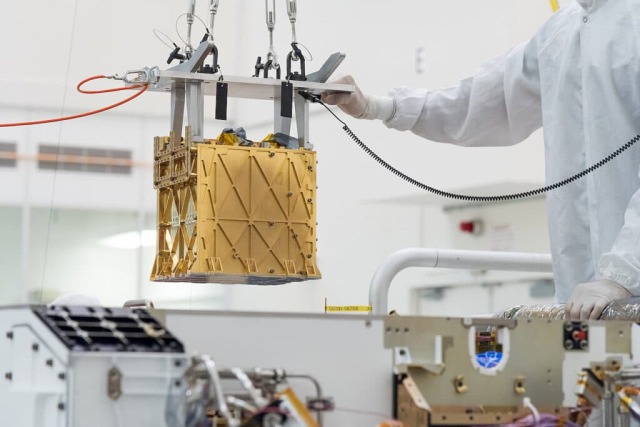One of the instruments of the Perseverance rover, the MOXIE experiment, has successfully completed its scientific mission on Mars. This is a demonstrator of the technology of producing oxygen from the local atmosphere, which consists mainly of carbon dioxide. The device successfully exceeded the minimum performance threshold by almost twice, showing that future Martian colonists have a reliable way to get air for breathing.
The Perseverance rover, which has been working tirelessly for two and a half years, carries on board not only tools for searching for traces of extraterrestrial life. One of its four main tasks is to test the key technology needed to colonize Mars.
In order not to carry all the oxygen necessary for breathing with them, prospective missions to the Red Planet should be able to produce it on the spot. To do this, the rover was equipped with the Mars Oxygen In-Situ Resource Utilization Experiment ( MOXIE ) device.
Last Wednesday, the US National Aeronautics and Space Administration (NASA) reported on the successful completion of this task. The MOXIE device turned on for the 16th time on August 7, producing 9.8 grams of oxygen. In total, during the time that has passed since the landing of the rover and the beginning of its full functioning, the device has produced 122 grams of oxygen.
This is enough to maintain the vital activity of a small dog for ten hours. An adult at rest will have enough oxygen for about three and a half hours.
The minimum threshold that the experiment team identified as the success of MOXIE is six grams of oxygen per hour. It managed to be surpassed twice, reaching the maximum possible performance of the device. Theoretically, even greater efficiency is possible, but the rover's power system already does not allow it to be demonstrated. At its peak, MOXIE consumes 300 watts of electricity, which the rover is forced to pre-store in the battery, since the electrical power of the Perseverance radioisotope generator was 110 watts at the time of launch and has only been decreasing since then.
MOXIE uses a high-temperature electrolysis process to generate oxygen. The outboard air, consisting of 95 percent carbon dioxide (the rest is nitrogen and argon), passes through a filter for dust removal. Then, with the help of a spiral compressor, its pressure rises to the ground.
At the next stage, the gases are heated to about 800 degrees and enter the electrolysis cells. There, as a result of thermal decomposition and electrocatalysis, carbon dioxide molecules lose one atom of oxygen each — they turn into carbon monoxide molecules.
 |
| Installation of the MOXIE device developed by the Massachusetts Institute of Technology in the Perseverance rover, March 2019. |
| Source: NASA, JPL-Caltech |
The released oxygen ions, having received electrons from the cathode, interact with ceramic plates made of scandium-stabilized zirconium and yttrium oxides. This type of ceramic has the property of conducting oxygen ions. They, in turn, move through the plates to the anode, where they combine into molecular oxygen. The resulting gas is checked for purity (at least 98 percent is needed), after which, together with the remaining CO2 and CO, it is released back into the atmosphere.
The success of MOXIE can rightfully be considered the most important milestone in the development of technologies for the exploration of other celestial bodies. This is the first experiment in history to develop the resources necessary for human life on another planet. Oxygen will be needed by future colonists not only for breathing. It is also an oxidizer for rockets on the way home.
The results of MOXIE's work will improve the efficiency of the technological process used and develop a full-size support system. According to the plan, the next installation should already produce at least two kilograms of oxygen per hour, consuming 25-30 kilowatts of electricity. After production, oxygen, of course, will not be released back into the atmosphere, but stored in liquid form.

